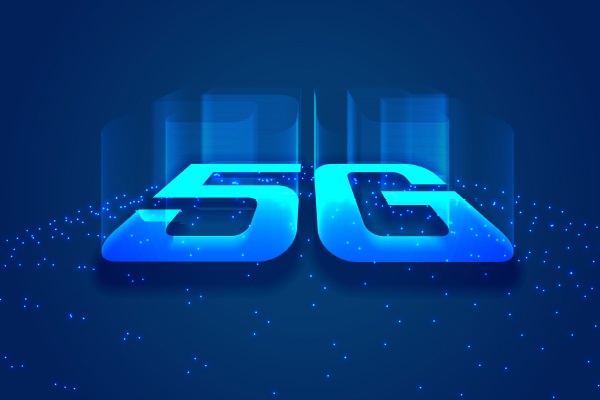The Disruptive Impact of 5G on Optical Network Architecture
05-Mar-2019 12:22 PM 5G

The emergence of 5G, the next generation of mobile broadband standard from 3GPP, is expected to have a massive impact on the mobile backhaul architecture. Besides driving up the per-cell throughput by at least 10x when compared to 4G/LTE, 5G is also expected to lead to a massive 100x increase in the number of user devices through “Internet of Things (IoT)”, a significant reduction in network latencies by a factor of 10x to support real-time tactile Internet applications and an ultra-reliable network for a seamless service experience. 5G is introducing several new features such as enhanced coordinated multipoint (CoMP), dual connectivity (X2 and eX2 interfaces) and carrier aggregation that will make radio access networks (RAN) more complex to construct. Together these changes will put greater demands on the transport network and have a disruptive impact on the optical network architecture to better accommodate these requirements.
In general, 5G is different from previous mobile generations in three ways:
- Densification or an increase in the number of cell sites per unit area along with greater fiberization of cell towers
- Cloudification or greater centralization of baseband resources that connect to “street level” radio nodes over optical fiber
- Disaggregation or flexible and “software-centric” separation of control and data plane for higher scalability and dynamic resource allocation.
As a result, with the advent of 5G, optical networks are expected to display three significant changes.
- Mobile Backhaul evolving to Crosshaul (X-haul): Mobile backhaul refers to the section of the telecom network that transports cellular traffic from base stations at cell towers to the nearest traffic switching center. While multiple backhaul options are available today (optical fiber, microwave or copper) with the arrival of pre-5G/5G mobile operators are fast gravitating towards optical fiber as the physical medium of choice. 5G is introducing new radio access architectures such as C-RAN (centralized RAN) using new protocols such as CPRI/eCPRI to connect multiple remote radio heads at street level to a centralized cloud-resident baseband unit at the macro base station. While optical fiber is the popular choice for this “fronthaul” network, 5G also imposes additional demands in terms of latency, jitter, scalability and connection bandwidth on the backhaul. These requirements are expected to be met through a new “crosshaul” architecture that integrates fronthaul and backhaul in a single transport network to achieve overall reduction in capex and opex. The 5G Crosshaul transport will use intelligent multiservice edge devices that combine heterogenous broadband access media (wireless or wired), flexible service delivery (enterprise or residential) and packet transmission services over optical fiber.
- Hyperscale Metro and Core Networks: High-capacity optical communications is a key technology advance that is driving network transformation in the Metro and Core networks. Thanks to advances in this area, a single optical fiber strand is now capable of carrying tens of terabits of traffic today through modern techniques such as dense lightwave multiplexing (DWDM), optical amplification, reconfigurable optical add-drop multiplexing (ROADM) and coherent optical processing. 5G will capitalize on recent advances in coherent DWDM technology to build hyperscale metro and core networks that transmits 100G/200G/400G bit rates per wavelength over thousands of kilometres at the lowest cost per bit. Coherent DWDM achieves these gains primarily through the use of superior modulation formats that make use of amplitude, phase and polarization of light waves and better compensation for chromatic dispersion and polarization mode dispersion (CD, PMD) through sophisticated digital signal processors. Advanced network functions such as multi-degree colorless/directionless/contentionless optical switching (CDC ROADM), universal terabit-scale OTN/PTN cross-connects (DXC) and generalized MPLS protocols (GMPLS) for efficient automated switching at the wavelength layer enable the system to optimally pack service traffic over fewer wavelengths and engineer a highly cost-effective solution in high-bandwidth DWDM networks.
- Open and Virtualized Networks: The complexity of next-generation technologies such as 5G is driving a major transformation to a software-defined network (SDN) paradigm that makes these networks more programmable to allow a more agile deployment of new applications and faster instantiation of services. With SDN, telecom operators envision re-architecting their networks such that new services can be turned up automatically “on-demand” as opposed to taking months of tedious, manual processes. Network Function Virtualization (NFV) virtualizes proprietary network appliances for specialized functions such as firewalls, routers, switches, intrusion detection, NAT and DNS such that they run in software often implemented in cloud service frameworks. The benefits of NFV include reduced investments in dedicated hardware and associated operational costs in terms of space rentals, power and cooling. In addition, NFV enables telecom service providers to rapidly launch innovative network services with the flexibility to scale up (or down) as per varying business demands.While the SDN concept originally emerged in the context of data centers of large web-scale companies, it is being gradually extended to radio access networks, packet transport and optical networking layers through the evolution of dedicated SDN “domain controllers”. Open source options such as Open Network Operating System (ONOS) that are widely supported by the telecom community including large carriers and vendors are now available and are being used to build carrier-grade SDN controllers with open application programing interfaces (APIs) to northbound orchestration systems and southbound network equipment. From a network management and monitoring perspective, XML-based network configuration protocol (NETCONF) in combination with YANG data modelling language is gaining significant traction in the industry.
5G will represent a significant advance over previous mobile technology generations due to an explosion in the number of network-enabled IoT devices, greater fiberization and densification of cell sites and a “cloudified” RAN architecture. The magnitude of these changes is such that it is likely to have a transformational impact on the 5G optical network architecture extending right from the Access to the Metro and Core segments. The emerging cloud architecture with its software-centric network paradigm also presents opportunities for telecom vendors and service providers to evolve innovative products and services that can contribute to the overall growth of the global telecom industry.


